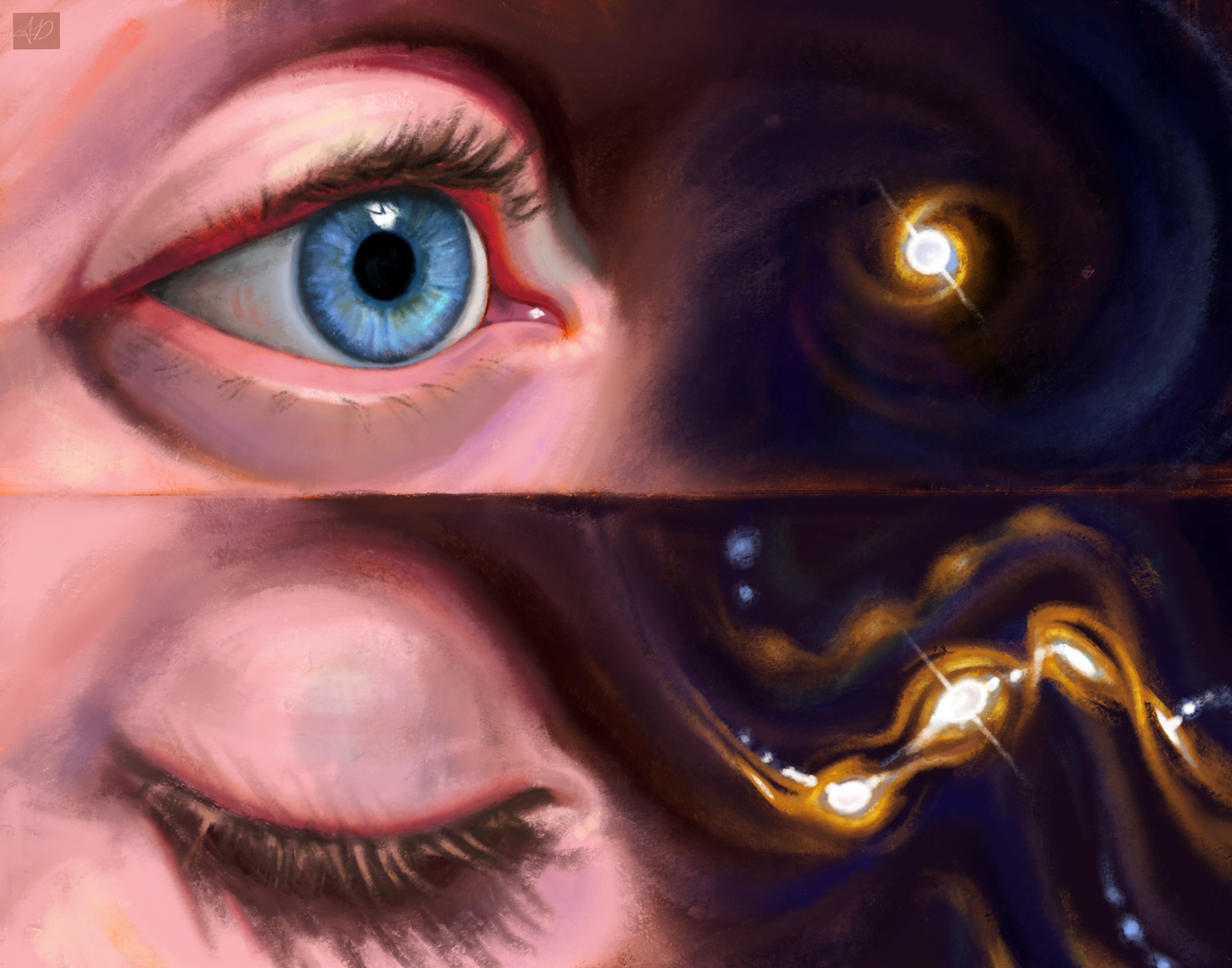Electrons Observed vs. Un-Observed
Sarah De Falco
Junior, LSA

Medium
Digital Painting
Abstract
In 1998, researchers demonstrated a phenomenon called the “Observer Effect”. The Observer Effect describes the behavior of electrons when observed versus unobserved. When observed, electrons move as a particle moves. They exist at a specific point in time and space. This is represented at the top of the painting, where the open eye looks at an electron spinning at a single point. When unobserved, electrons move like a wave. This is represented at the bottom of the painting, where observation has been removed and the electron is found at multiple points, moving with the shape of a wave.
In 1801, physicist Thomas Young performed his famous “Double Slit” experiment, which proved the wave-nature of light. He made two slits in a board, placed close together, and shined light through them onto another board. Rather than shining through as two defined lines of light, multiple lines of light appeared. Young’s experiment showed that light waves were interfering with each other, passing through the board at multiple points and meeting again on the other side. In 1926, Louis De Broglie and Erwin Schrodinger proposed that matter, specifically electrons within atoms, also exhibited wave-like properties. In 1998, researchers at the Weizmann Institute performed a modernized double-slit experiment using electrons. They observed something very interesting. They found that, under observation, the electrons behaved as particles, moving through only one point in a barrier. When the electrons were unobserved they behaved as waves, passing through multiple points in the barrier. This phenomenon is called the “Observer Effect”, and impacts electrons at a sub-micron scale (less than one-thousandth of a millimeter). Observing an electron passing through a point in a barrier limits its ability to pass through other points. Simply put, if you observe it passing through Point A, you know it’s not passing through Point B. When unobserved, the electron passes through multiple points at once – both Points A and B.
In my painting, I illustrate the impact of observation on an electron. On the top, I portray an open eye, representing the presence of observation. The eye looks toward an electron, spinning at a single point in space. On the bottom, I portray a closed eye, representing the absence of observation. Because the observation has been taken away, the electron moves with the properties of a wave. I highlight that the electron now moves through multiple points in space, at the top, middle and bottom of the wave. This electron would be able to pass through a barrier at multiple points, whereas the electron at the top of the painting could only pass through a barrier at a single point. In both the top and bottom of the painting, the electrons and the eyes are interacting, flowing into each other. This illustrates the influence of observation on electron behavior. These seemingly separate things (observer and electron) are deeply intertwined, one impacting the other. The Observation Effect occurs at such a small scale, and is something so foreign to our everyday interactions, that it can be difficult to visualize. Representing the Observation Effect in an artistic way, rather than through scientific diagrams or mathematical equations, allows viewers to more easily understand its basic principles.
